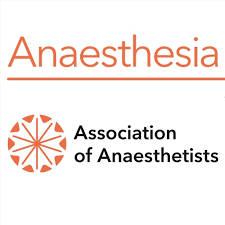Study finds high rates of preventable, adverse events in perioperative care

Editor's Note Adverse events (AEs) remain widespread in perioperative care, affecting nearly one in three patients and resulting in substantial and often preventable patient harm, according to a retrospective cohort study published November 13 in The BMJ. The study analyzed 1,009 weighted admissions from a sample of 64,121 surgical patients…
ACS recognizes 77 hospitals for excellence in surgical outcomes

Editor's Note The American College of Surgeons (ACS) has recognized 77 US hospitals for “exceptional surgical outcomes” in 2023 based on performance metrics tracked as part of the ACS National Surgical Quality Improvement Program (NSQIP). According to an October 30 ACS announcement, these hospitals were selected from among 609 eligible…
Research reveals racial disparity in postoperative pain management

Editor's Note Black patients are less likely to receive multimodal analgesia and more likely to be given additional oral opioids compared to white patients, according to research presented at the Anesthesiology 2024 annual meeting. According to an October 20 report on the retrospective study from the American Society of Anesthesiologists,…
Study: Beta-blockers could increase postoperative stroke risk

Editor's Note Research presented at the American Society of Anesthesiologists (ASA) annual meeting has found that beta-blocker use is associated with an increased risk of postoperative stroke, particularly among Black and Hispanic patients undergoing noncardiac surgeries, Medpage Today reported October 20. According to the article, the retrospective study analyzed the…
Study: Poor sleep before surgery boosts risk of postoperative delirium

Editor's Note Poor sleep quality in the month leading up to surgery could increase the risk of postoperative delirium, according to research presented at the Anesthesiology 2024 annual meeting, hosted by the American Society of Anesthesiologists (ASA). An October 15 report in NewsWise has the details. According to the article,…
Study: NSAIDs reduce risk of postoperative delirium

Editor's Note A study presented at the 2024 American Society of Anesthesiologists annual meeting suggests that non-salicylate NSAIDs may significantly reduce the risk of postoperative delirium, a serious complication affecting up to 15% of surgical patients, Anesthesiology News reported October 20. Delirium is especially prevalent in older adults and those…
Study: Preoperative nutrition program reduces surgical complications, costs

Editor's Note A system-wide preoperative nutrition program resulted in shorter hospital stays and fewer postoperative complications across the Allegheny Health Network, according to a study presented at the American College of Surgeons Clinical Congress 2024. Medical Xpress reported the news October 18. According to the article, researchers analyzed data from…
Study quantifies link between preoperative depression, postoperative delirium

Editor's Note Individuals with preoperative depression are at significantly higher risk of developing postoperative delirium, according to a systematic review and meta-analysis of 42 studies involving a total of 4.6 million patients. Published September 4 in Anaesthesia, the study is first review to quantify the incidence and risk of postoperative…
Study: Women more likely to die from postoperative complications after high-risk surgery

Editor's Note Female patients undergoing high-risk surgeries are significantly more likely to die from postoperative complications despite experiencing complications at similar rates, according to findings published October 16 in JAMA. Observed in a cohort of 863,305 Medicare beneficiaries, this disparity suggests that clinicians may be less effective at recognizing and…
Outpatient, ASC clinicians share perspectives on upcoming NOPAIN Act implementation

Editor's Note On October 14, Anesthesiology News published a monograph featuring clinical perspectives on how “those working in the trenches of postsurgical pain management” are preparing for the Non-Opioids Prevent Addiction in the Nation (NOPAIN) Act, which outlines new, separate Medicare reimbursement for certain non-opioid analgesics in outpatient and ambulatory…

 Free Daily News
Free Daily News